#Capra caucasica
Explore tagged Tumblr posts
Text
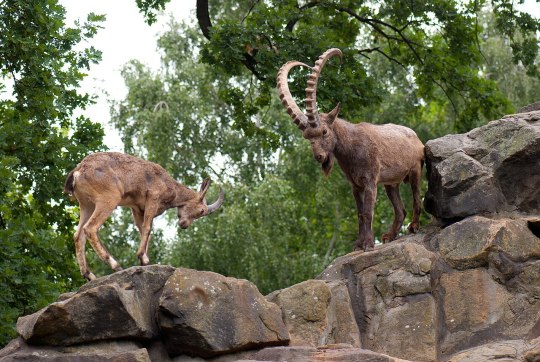


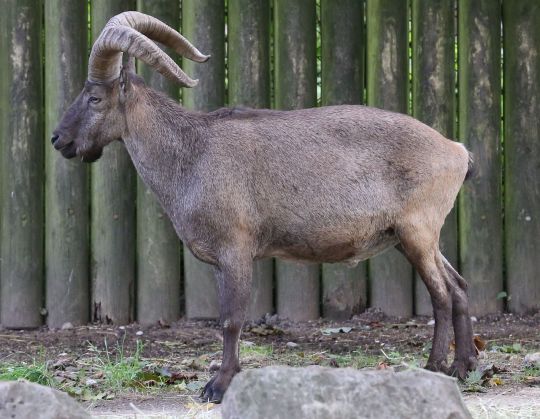

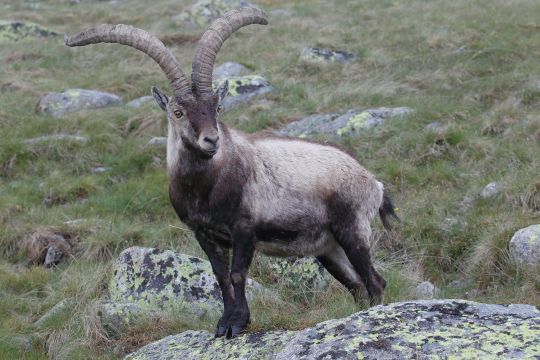
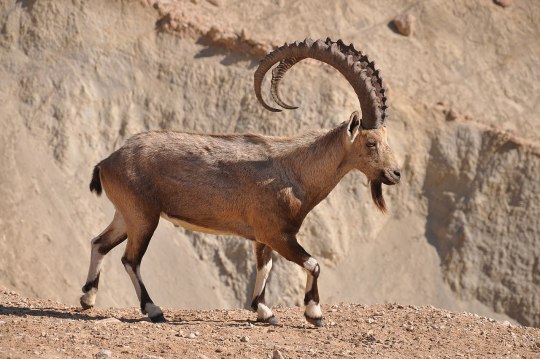
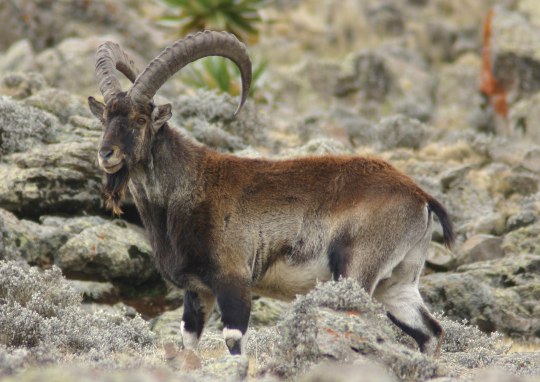
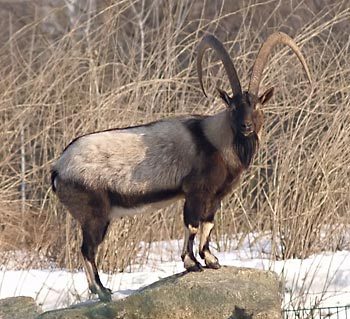
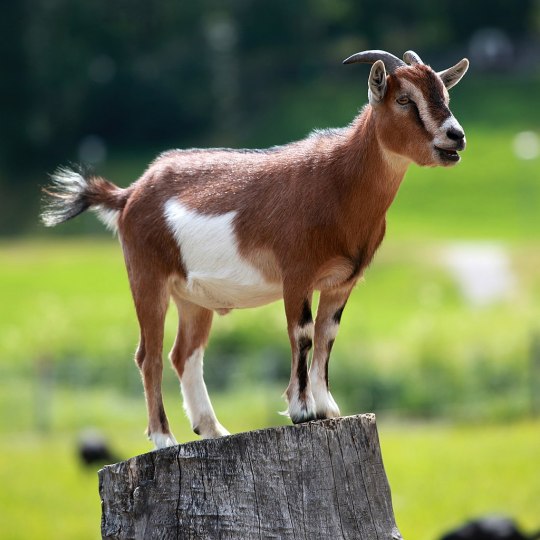
#poll#random polls#poll time#my polls#tumblr polls#polls#tumblr poll#fun polls#polls on tumblr#polls are fun#goat#goats#animal#ibex#alpine ibex#nubian ibex#Siberian ibex#Capra sibirica#Markhor#Capra falconeri#Alpine Ibex#Capra ibex#East Caucasian Tur#Capra cylindricornis#West Caucasian Tur#Capra caucasica#Iberian Ibex#Capra pyrenaica#Nubian Ibex#Capra nubiana
118 notes
·
View notes
Photo

West Caucasian tur Capra caucasica
Observed by itallmas, CC BY
33 notes
·
View notes
Video
Cabra montés o íbice ibérico "Capra pyrenaica" Monte Pina CASTELLON 1.39...
La cabra montés o íbice ibérico. (Capra pyrenaica) es una de las especies de bóvidos del género Capra que existen en Europa. Antiguamente repartido por el sur de Francia, Andorra, España y Portugal, la cabra montés es un endemismo que actualmente se encuentra principalmente en las áreas montañosas de España y del norte de Portugal. Las otras especies del género son el íbice alpino o cabra de los Alpes (Capra ibex), el íbice siberiano (Capra sibirica), el tur del Cáucaso occidental (Capra caucasica), el tur del Cáucaso oriental (Capra cylindricornis), la cabra salvaje o cabra bezoar (Capra aegagrus), el marjor (Capra falconeri), el íbice de Nubia (Capra nubiana) y el íbice de Etiopía (Capra walie).
0 notes
Photo
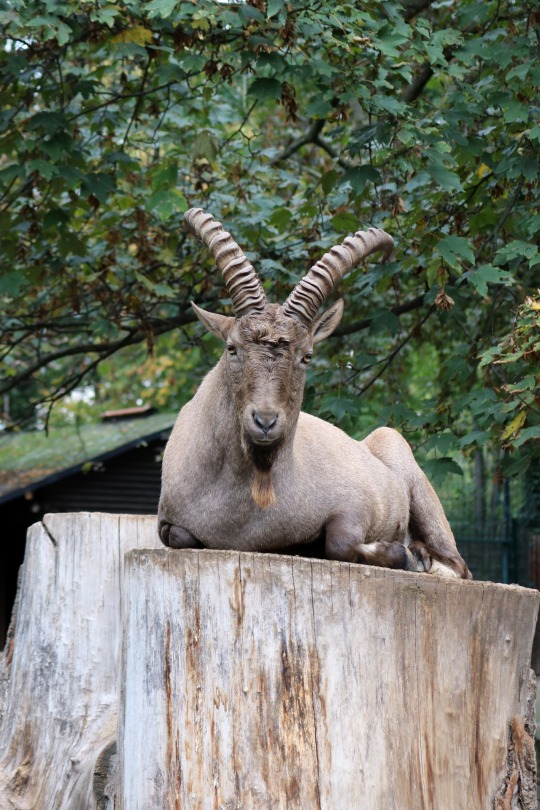
West Caucasian Tur (Capra Caucasica) Zoo, Dresden, Germany
#photographers on tumblr#animals#ibex#zoo#dresden#germany#west caucasian tur#capra caucasica#nature#autumn#fall#vertical#original photographers#original photography
129 notes
·
View notes
Photo
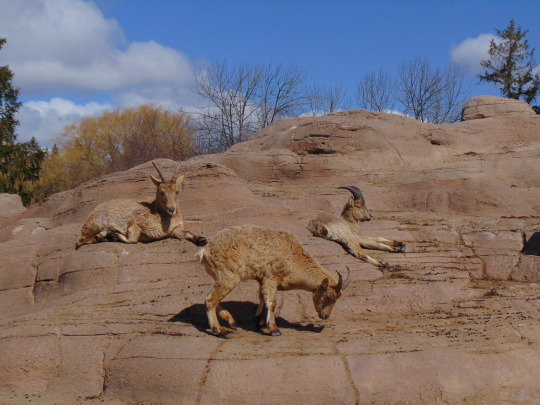

A trio of West Caucasian Tur (Capra caucasica) at the Toronto zoo.
#West caucasian tur#ungulate#bovidae#bovid#caprinae#caprini#capra#caucasica#toronto zoo#zoo photography#my pix
89 notes
·
View notes
Photo




Dagestan Tur.
1K notes
·
View notes
Text
Los tures en el Record Book del SCI
Los tures en el Record Book del SCI
Marcial Gómez Sequeira con el tur del Cáucaso central que cazó en octubre de 2012, actual nº 17 del Record Book con 144 5/8″.
Actualmente el Safari Club Internacional (SCI) reconoce tres tures del Cáucaso en el Record Book en su hábitat natural: tur oriental o de Daguestán (Capra cylindricornis); tur del Cáucaso central (Capra caucasica caucasica); y tur occidental o de Kubán (Capra caucasica…
View On WordPress
#Arrui#baral#Boc balear#capra#Capra caucasica#Capra cylindricornis#carneros salvajes#Cáucaso#caza#caza de montaña#caza del tur#cazadores#íbices#macho montés#makores#Marcial Gómez Sequeira#Safari Club Internacional#tur
0 notes
Text

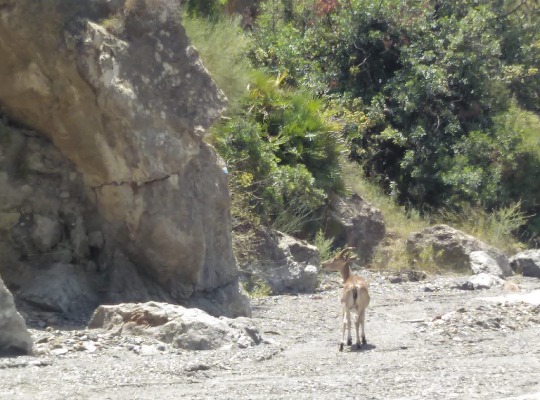

Cabras en el barranco de Sopalmo, en Mojácar, Almería (España) (julio de 2020)
Capra pyrenaica. La cabra montés o íbice ibérico es una de las especies de bóvidos del género Capra que existen en Europa. Las demás especies del género son el íbice alpino (Capra ibex) y el siberiano (Capra sibirica), el tur del Cáucaso occidental (Capra caucasica) y el del Cáucaso oriental (Capra cylindricornis), así como la cabra salvaje o cabra bezoar (Capra aegagrus), el marjor (Capra falconeri), y los íbices de Nubia (Capra nubiana) y de Etiopía (Capra walie). Antiguamente repartida por el sur de Francia, Andorra, España y Portugal, hoy la cabra montés se encuentra principalmente en áreas montañosas de España y del norte de Portugal, aunque se halla en clara expansión.
Esta especie se desenvuelve por igual de día y de noche, aunque sus máximas horas de actividad se localizan por la mañana y a finales de la tarde, cerca del crepúsculo. En invierno desarrollan su actividad en las horas centrales del día, que es cuando hace más calor.
Son animales sociables, pero cambian a menudo de manada. Esta puede estar constituida por machos adultos, hembras con sus crías o adolescentes de ambos sexos (en este último caso, solo durante el verano).
0 notes
Text
West Caucasian tur youngster having a wee nibble
Twin babes hanging with Mom
When I first started Volunteering at the Zoo in the Fall of 2012, the Eurasia portion had been closed for a while as it underwent a bit of a facelift in conjunction with the arrival of the giant pandas for their 5-year stay. I have no idea whatsoever when I had last visited that region of the Zoo prior to its updating; when I visited as a Guest I tended to head toward Savanna for the most part, as I recall. I knew we had some red pandas (I worked an “observation shift” with two of them while Eurasia was still closed in the Fall of 2013) and was vaguely aware of there being snow leopards, but that was honestly about it. The Zoomobile drive-through began to operate in late 2013 – allowing us to view the perimeter animals of that region – but the walk-through didn’t open to the public until Spring of 2014. Volunteers and Staffers were given a few days before the Grand Opening to wander through and explore the new (or renovated) exhibits; it was sometime during those days that I first set eyes on the huge West Caucasian tur “mountain” and it was love at first sight.
A goat for all seasons
These adorable goats (some websites list them as “goat-antelopes, but that seems faulty to me) never fail to bring a smile to my face, no matter the season, in all kinds of weather. They are cute and curious, nimble and joyous. Even in the hottest days of the summer a visitor will still likely see at least a couple of members of the large extended family moving about (sometimes in the tunnel-through), eating, drinking, play-jousting, or just watching the interesting animals on the other side of their fence. Here I refer to us humans; there aren’t any good sight lines to the other species in the Zoo’s collection from the tur exhibit, although I have admittedly never stood atop their mountain. Having said that, I did experience a rather hilarious moment during the pre-opening days: while I was standing on the upper viewing platform for the snow leopard exhibit located directly across the path from the turs, I heard a bit of a mild commotion coming from the mountain goats’ exhibit. When I went to the other side of the viewing area to see what was up, I saw that many of the flock had made their way up close to the fence on the near side of their enclosure. Wondering what would have caused this reaction, I craned my neck out as far as I could and spied the catalyst: two of the Outreach and Discovery Keepers were taking a few of the Kids’ Zoo’s domestic goats out for a walk and the turs had gathered together to stare at them in wonder and amazement – and perhaps a little envy? They began to bleat at the leashed goats, but it was unclear to any of us bearing witness whether they were asking to be let out to see their cousins, or warning the “escapees” to get back into the enclosure before something happened to them. Either way, it was a delightful exchange to watch and, I am sure, is one of the reasons I took to these cute ungulates right off the bat.
Those horns are heavy, man!
But there is more to my affinity for this exhibit than just the adorable creatures who inhabit it. I am clearly not the only visitor who tends to head for the “big ticket” animals and not spend any time in the Eurasia Wilds area on a trip to the Toronto Zoo. As a result, most of this area is a lot less busy than the rest of the Zoo – something that appeals to me greatly on most days, but especially on weekends, holidays, PA days: any time the park is more crowded than usual. And as relatively quiet as the Eurasia Wilds are, the tur exhibit in particular is an absolute dream for anyone wishing to just commune with the animals of the four-legged variety and tune all the rest out. As I mentioned earlier, their space is huge. A fence completely surrounds it, so every inch of it (save for the deepest shadows of the tunnel through the south end of the mountain) is visible to the naked eye. If one is standing quietly at one part of the fencing and a group of other people comes in a little too close for relaxation purposes, it’s a pretty simple matter of moving a few dozen feet one way or the other and resuming your reverie once again. That same fencing is directly accessible by Zoo visitors on the one side and by the turs on the other, giving it the illusion of a giant petting zoo for the most part, which is aided in no small part by the cuteness dial being turned up to 11 for these lovely beasts. Obviously, it is not a petting zoo so please, if you do visit, don’t touch the turs; you likely wouldn’t get the chance in any event because as curious as they are, they still don’t tend to come within reach of grasping hands or protruding fingers. But on the off-chance they do, they are still not to be interacted with no matter how difficult it is to curb that instinct.
Hanging out in the hay feeder
There are always a lot of youngsters in the group, it seems, at various stages of development. For the first couple of years at least it is very easy for the little ones to squeeze through the bars of the two hay feeders – as you can see from the photo here at right. Actually, this little gal is the same one who appears on the May calendar page; this photo was taken a minute or two before the one that made the final cut as I had caught her dozing in the alfalfa and stayed long enough to capture her exiting the steel feeder, with one lone strand of straw hanging from her lips in true Huck Finn style. The youth will often sleep in there – and why wouldn’t they? shady, cushiony, airy… – but more often they will hop in there to obtain access to the sweet hay when the older, larger members of the flock push them out the way too many times. In all my visits to the turs exhibit, the sight of a small goat sitting in the feeder has never once failed to extract a comment or a giggle from the other people in attendance. Yes, it’s just that adorable.
Twins in the manger
As they grow bigger, the time eventually comes when the young turs are no longer able to squeeze through the bars of the larger feeders. Reluctant to admit total defeat, they usually at this point turn their attention to the trough-like mangers that are scattered about their enclosure, as you see in this photo at left. In the wild, turs tend to spend most of their daylight hours sheltering from the sun (and predators), so we are lucky to see them moving at all during normal Zoo hours…but when they are not moving they tend to fall asleep in (in my opinion) some of the most heart-melting locations and positions of any animals in the entire Zoo. A pretty large proportion of my photos – and I have taken a lot of shots of these animals – show the turs in various comic or “aw”-inspiring positions on and around their mountain. But they don’t sleep all the time – and tend to not all sleep at the same time, in any event. And it is the gentleness of their movements, the effortless and balletic leaping from perch to perch, the slow stroll they (usually) make from one place to another, it is all of this that often mesmerizes me when I visit so that time flies by without my noticing. But my greatest pleasure of all is the sound they make: the gentle tapping of their hooves on the ground; the soft “clunk” their horns emit when the turs lower their heads to the rocks; the incredibly satisfying “click-clack-click” they produce when jousting and sparring; all of these sounds and more are so relaxing and zen-like to me that these turs have rocketed up my list of most-visited species at the Toronto Zoo and are now very, very near the top of that list. No matter what kind of day/week/month/lifetime I am having, I can always rely on these wonderful mountain goats to provide me at least a few moments of respite, and I can always find a place around their perimeter to be completely alone with the animals for a while. They have become very important to me, which is those of you who have purchased my calendars for multiple years will likely have noticed an almost “disproportionate” number of pictures of West Caucasian turs in relation to the rest of the collection at the Zoo.
And for that, I make no apologies whatsoever.
Next month, I have something unusual for you: an animal that is not part of the Zoo’s collection (formally known as “non-inventory”) but the photo I managed to capture of their brood was far too remarkable to exclude from this calendar. I hope you enjoy it! In the meantime, here is some bonus footage of these wonderful Capra caucasica caucasica creatures.
2017 “Baby Boom!” Calendar – May Story When I first started Volunteering at the Zoo in the Fall of 2012, the Eurasia portion had been closed for a while as it underwent a bit of a facelift in conjunction with the arrival of the giant pandas for their 5-year stay.
0 notes
Photo

#Кавказский тур#Capra caucasica#Illustration#scientific illustration#West Caucasian tur#Caprinae#goat-antelopes#goat#the mountain goats
155 notes
·
View notes
Photo

West Caucasian Tur [Capra caucasica]
2 notes
·
View notes
Text
5 Domande Sul Kefir, Alimento Antico Per Benefici Moderni

Conosciamo il Kefir, un alimento antico, raccomandato per il benessere di oggi, che presenta numerosi benefici ma anche alcune controindicazioni. Il kefir è un alimento ricco di proprietà e benefici, che possiamo utilizzare in moltissime preparazioni e ricette, in grado di fornirci tanti preziosi nutrienti utili per la salute. Vitamine, sali minerali e probiotici che aiutano il nostro sistema immunitario. O l’acido folico, elemento prezioso in gravidanza. Questo particolare alimento, del tutto naturale, però, ha anche qualche controindicazione, ad esempio potrebbe causare stitichezza o crampi. Ma cerchiamo di conoscerlo meglio. Cos'è? Il Kefir è un latte fermentato, dalla consistenza cremosa, simile allo yogurt. Una bevanda ricca di fermenti lattici o probiotici e dal gusto fresco, leggermente acido ma piacevole. Si ottiene dal latte fresco (di pecora, capra o vacca), a cui vengono aggiunti i fermenti, o granuli, di kefir. Questi ultimi sono formati da un polisaccaride chiamato kefiran che ospita colonie di batteri e lieviti. Il kefir tradizionale è quello a base di latte. Ma oggi esistono anche varianti preparate con altri liquidi con contenuto di zuccheri, come il latte di soia, il latte di riso o l'acqua zuccherata. Da dove viene? E' un alimento molto antico, consumato da secoli nella tradizione caucasica e considerato la bevanda dei centenari. Il nome stesso è indicativo sui preziosi vantaggi che apporta al nostro organismo. Read the full article
0 notes
Photo

West Caucasian Tur [Capra caucasica]
2 notes
·
View notes
Photo

West Caucasian Tur [Capra caucasica]
4 notes
·
View notes
Photo

West Caucasian Tur [Capra caucasica]
6 notes
·
View notes
Photo

West Caucasian Tur [Capra caucasica]
3 notes
·
View notes